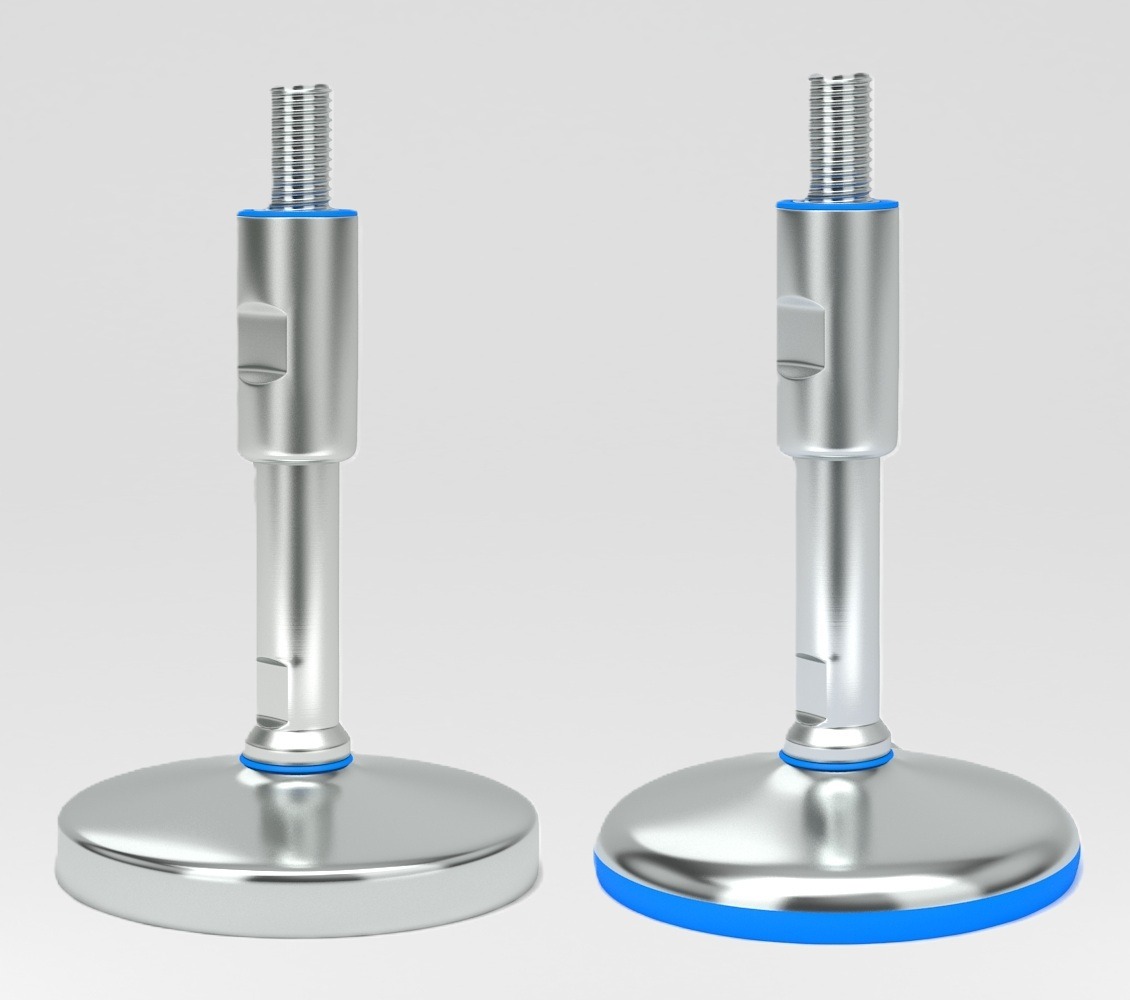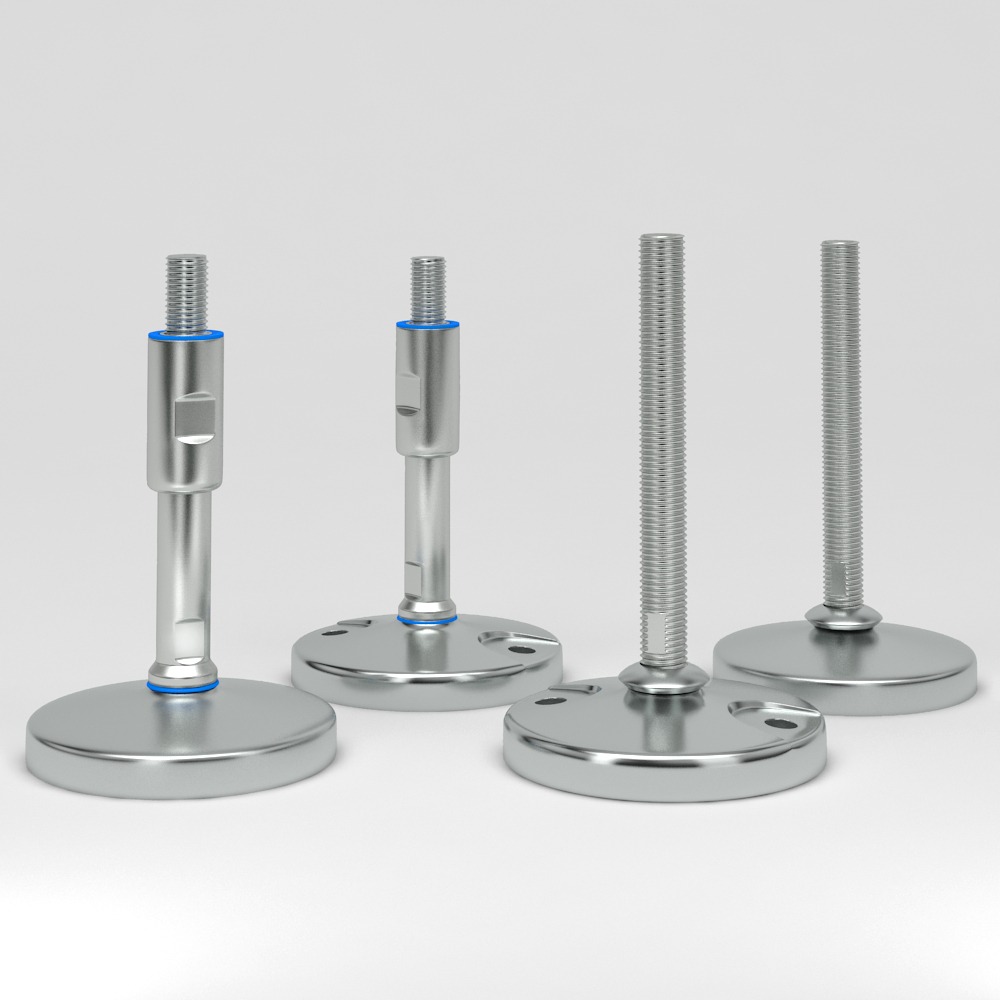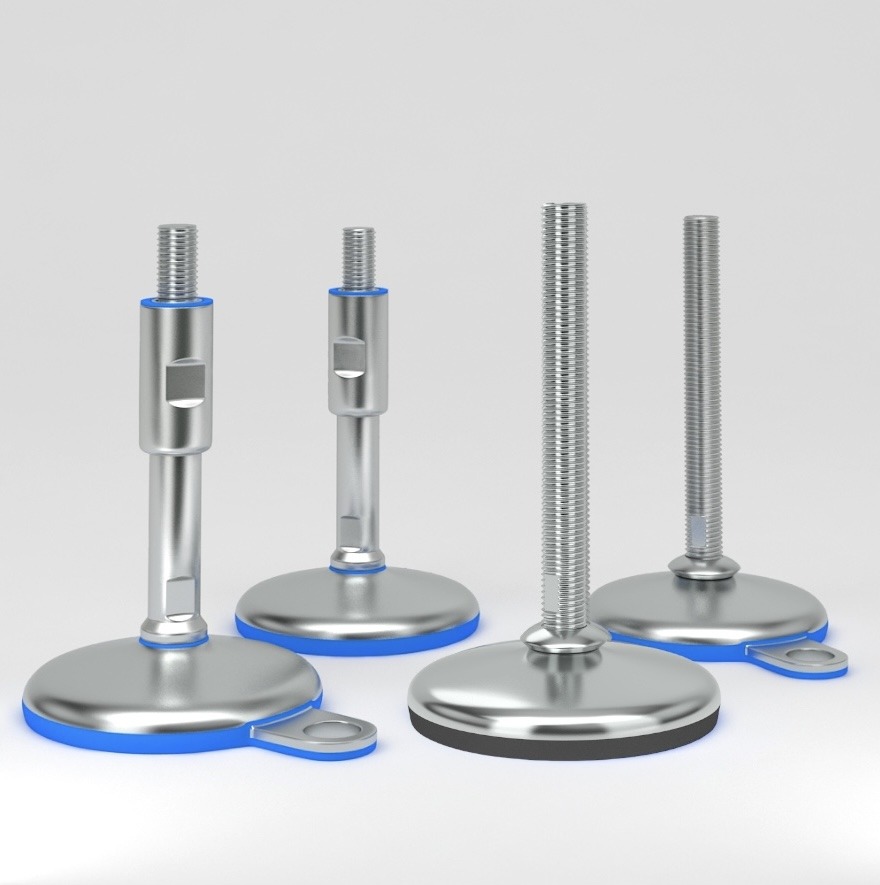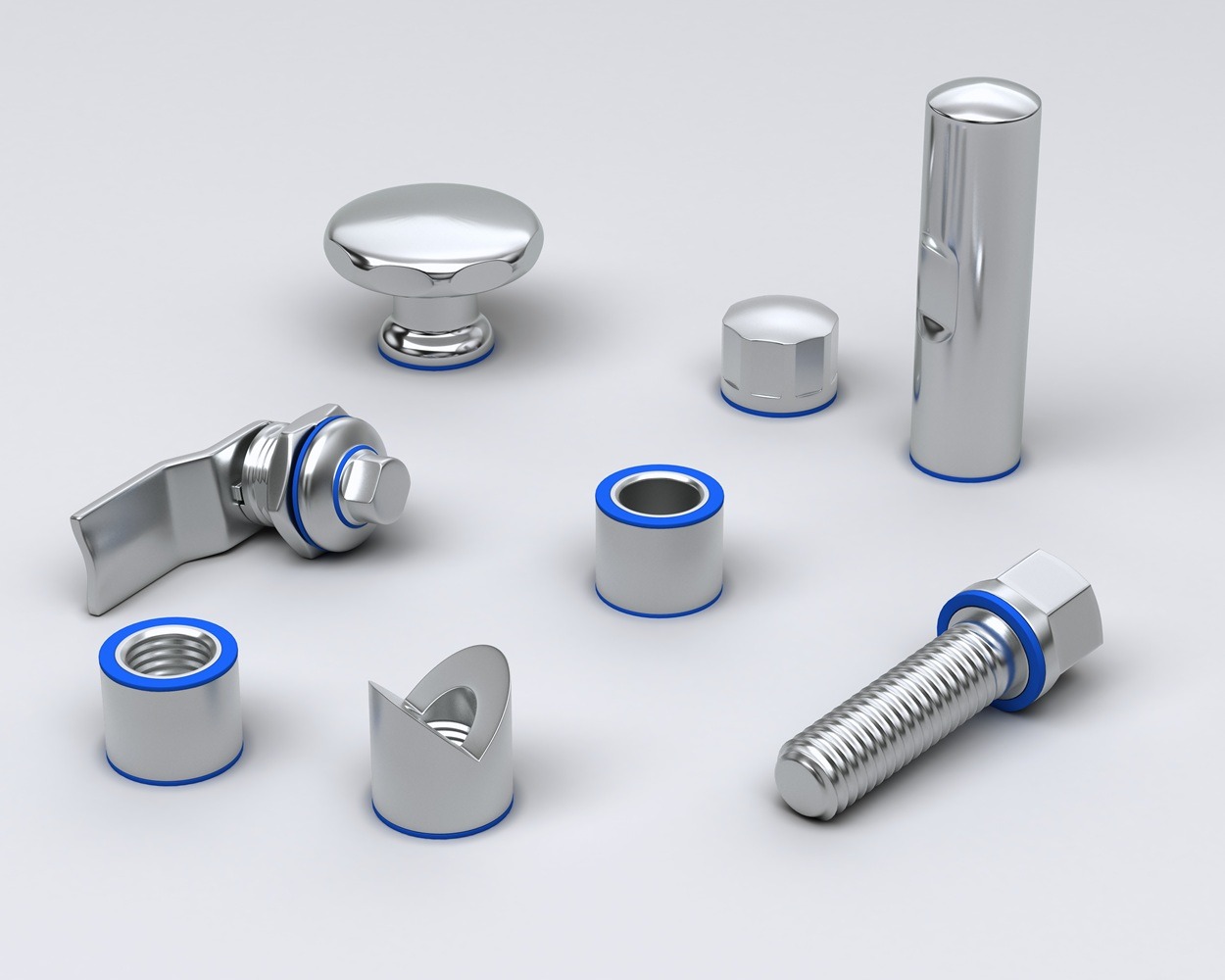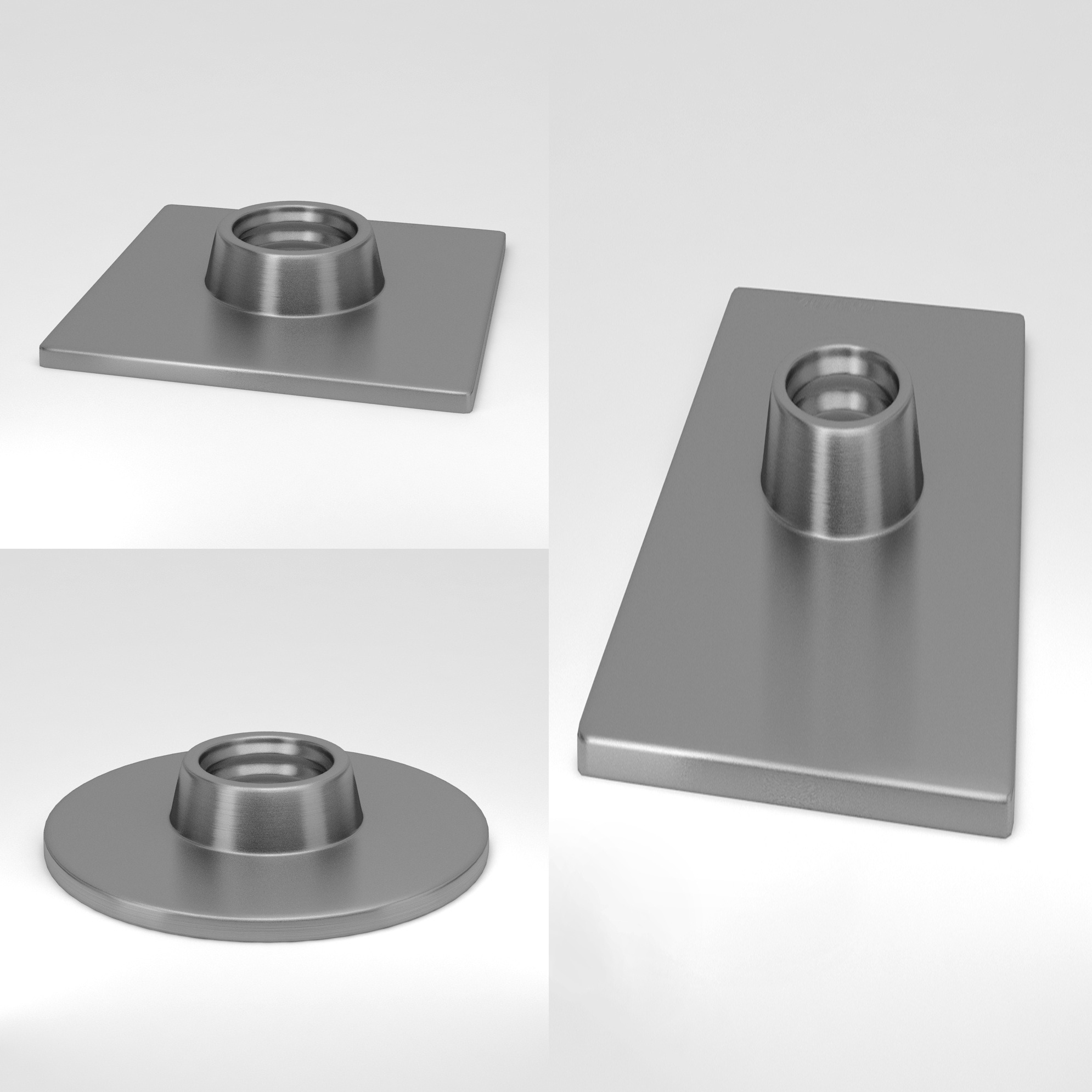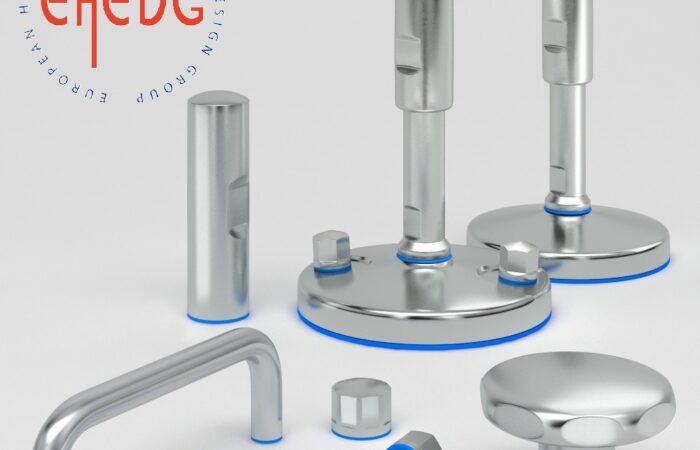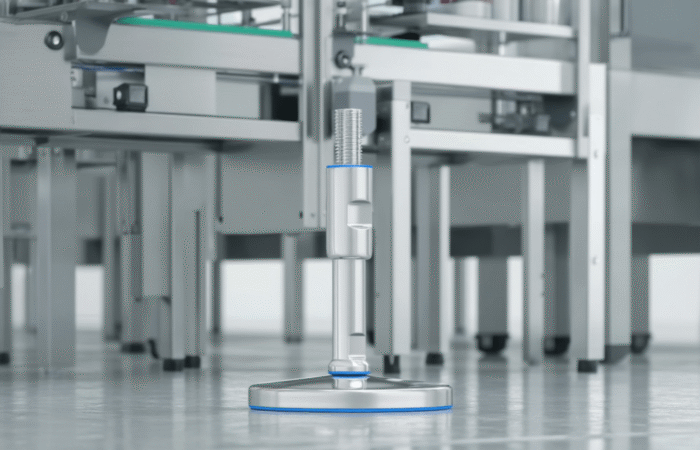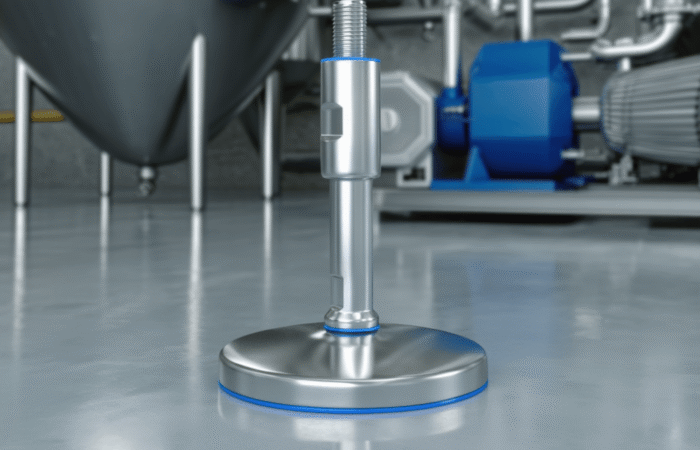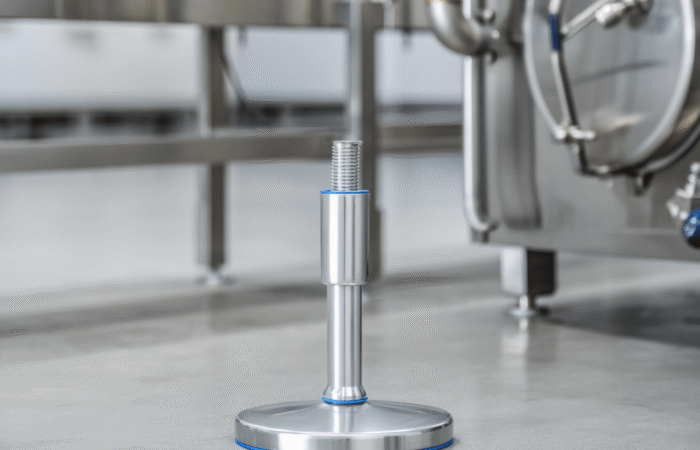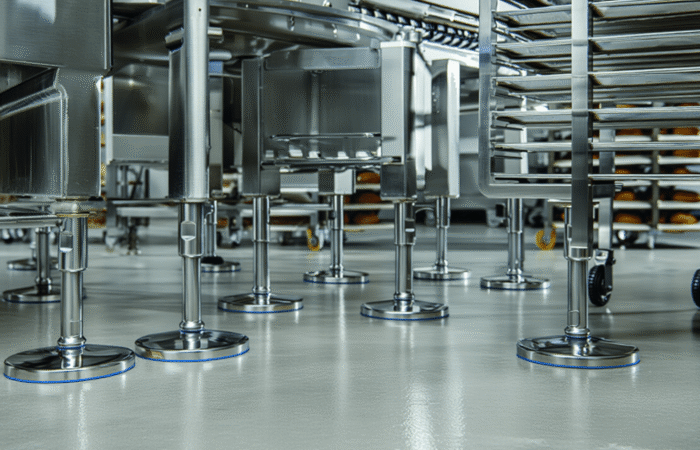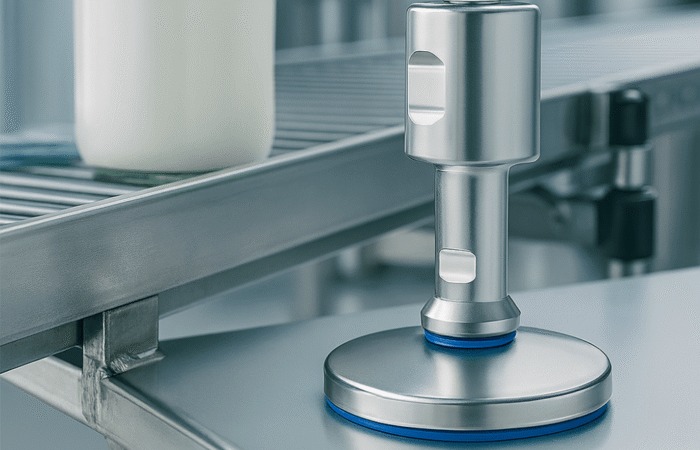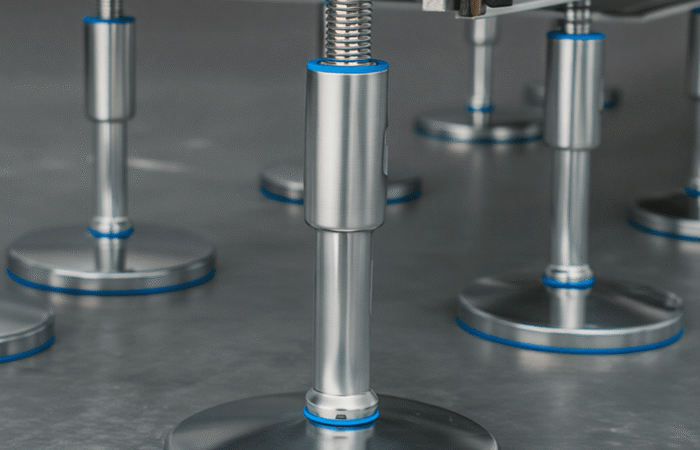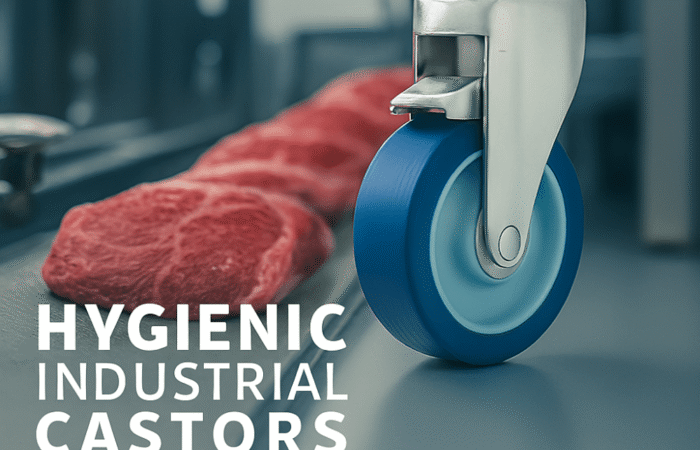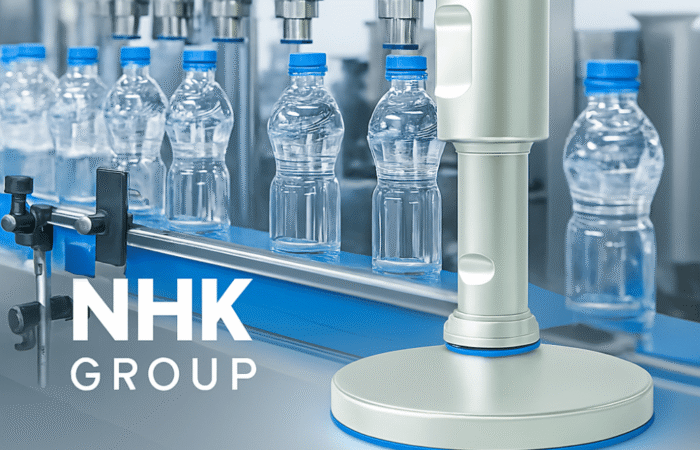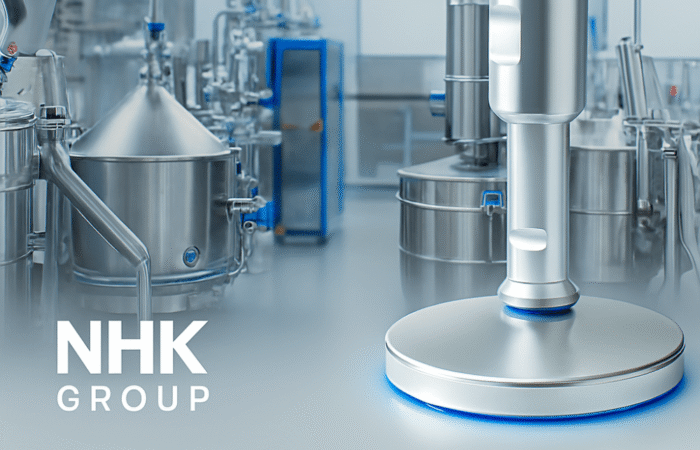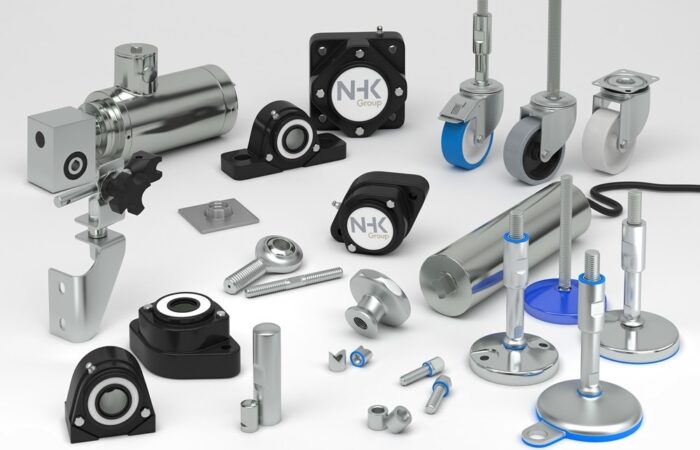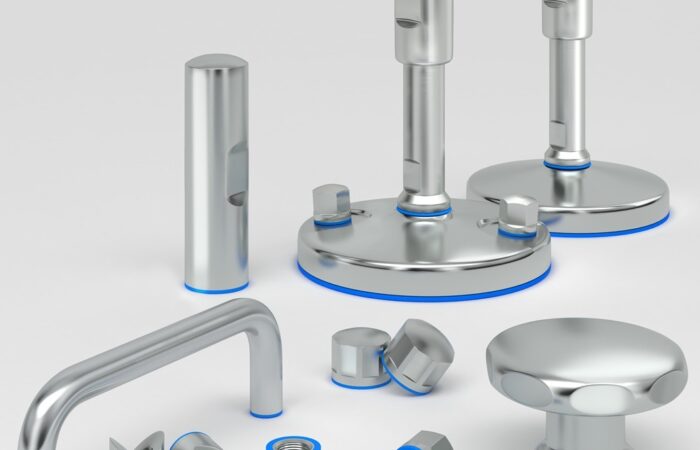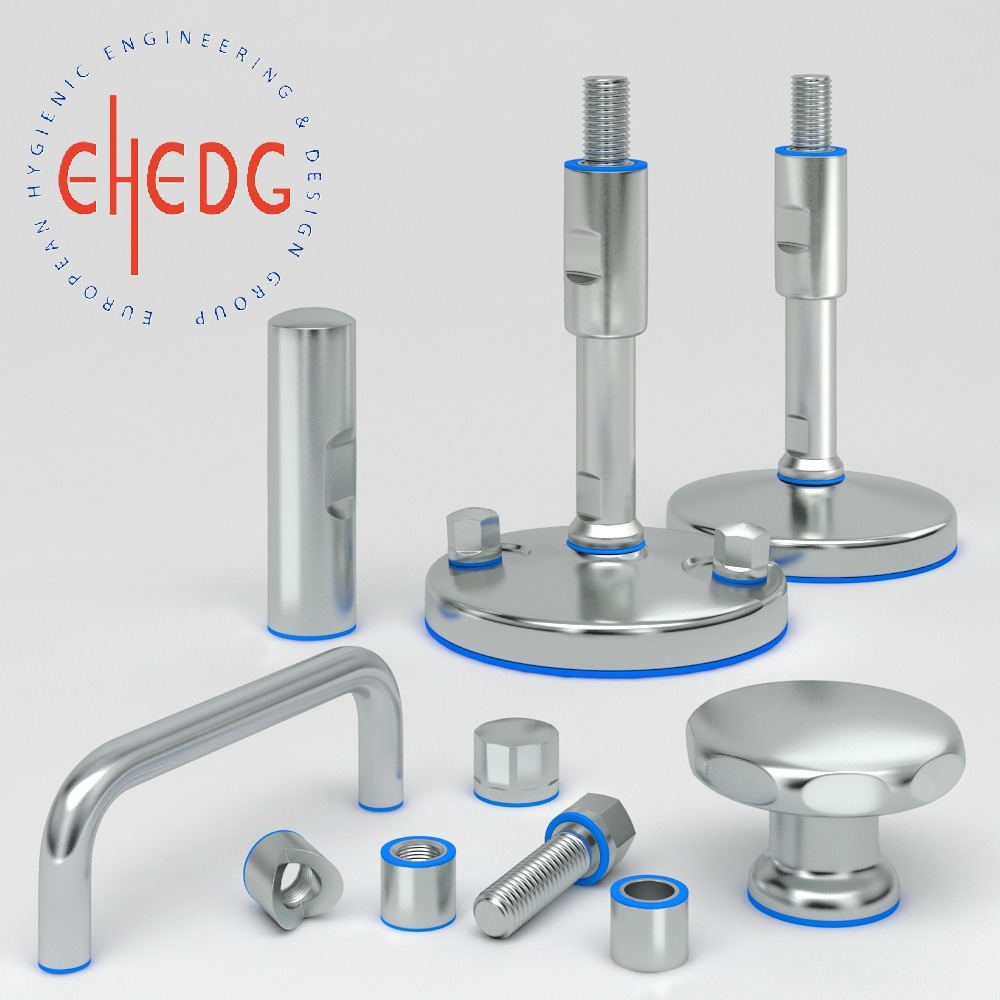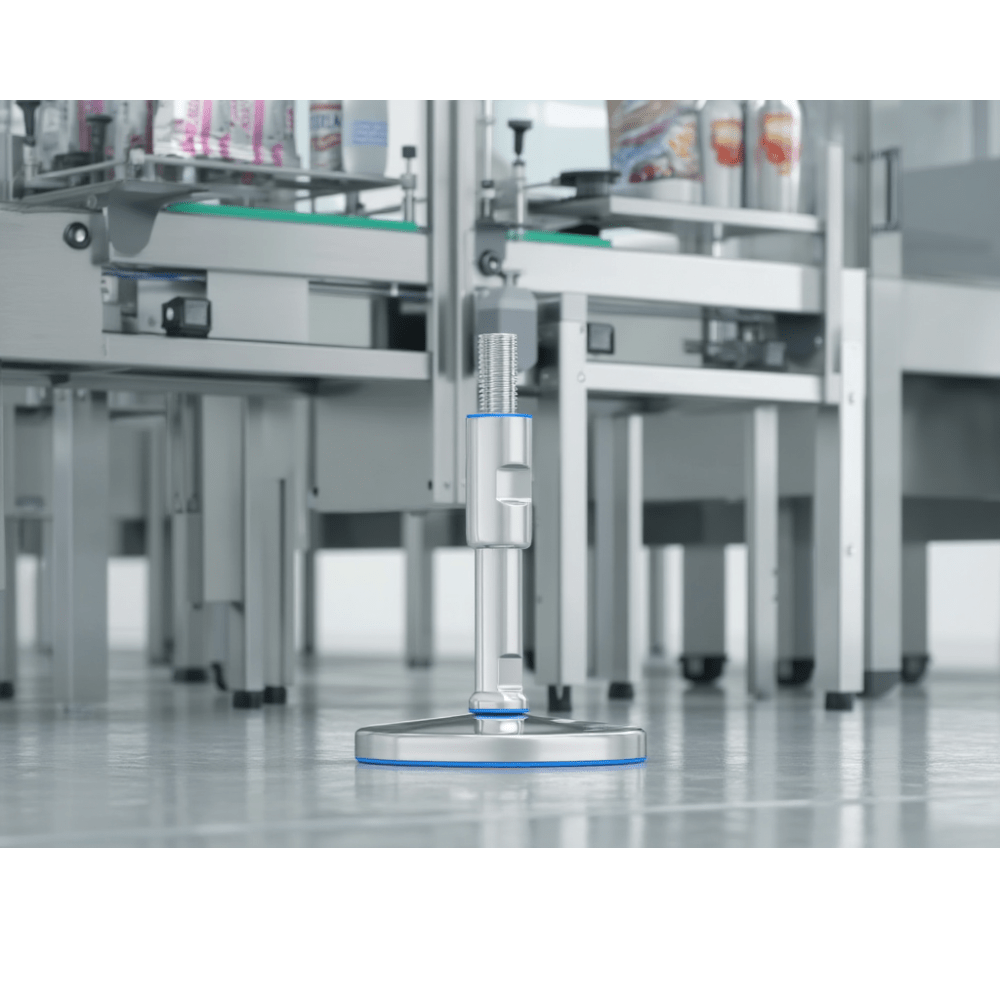Stainless Machine Leveling Feet
In industrial and commercial settings, machine stability is critical for operational efficiency, safety and longevity. One of the key components ensuring stability is the stainless steel machine leveling foot, which allows equipment to be properly aligned and secured on uneven surfaces.
Two primary types of stainless steel machine leveling feet are commonly used:
- Stainless Steel Machine Leveling Feet with Rubber Vulcanized Base
- Stainless Steel Machine Leveling Feet with Solid Base
Both designs offer unique advantages depending on the application, industry requirements, and environmental conditions. This article explores these two types of leveling feet through the lens of Experience, Expertise, Authoritativeness and Trustworthiness (E-E-A-T) to help you make an informed decision.
Get our catalogue here
See our product line here
Understanding Application-Specific Needs
Experience in the industry has shown that different applications require distinct leveling foot properties. Manufacturers and users have long debated the best choice between rubber-vulcanized base and solid stainless steel base leveling feet.
- Designed for environments where vibration reduction and noise control are critical.
- Ideal for light to medium-duty equipment that requires additional grip.
- Prevents machinery from slipping on smooth surfaces.
- Commonly used in food processing, medical equipment, and electronics manufacturing, where vibration isolation is crucial.
- Best suited for heavy machinery and high-load applications.
- Provides maximum stability without additional materials.
- Preferred in environments that require rigorous hygiene standards, such as pharmaceuticals and food production.
- Highly resistant to corrosion, extreme temperatures, and cleaning agents.
Evaluating Performance and Functional Benefits
1. Vibration Damping & Shock Absorption
- Rubber-Vulcanized Base:
- The rubber layer absorbs vibrations and shocks, reducing wear and tear on machines and preventing disturbances in precision operations.
- Reduces noise levels, making it beneficial in workplaces requiring quiet operation.
- Solid Stainless Steel Base:
- Does not provide inherent vibration damping.
- Requires external damping solutions if vibration is an issue.
- Preferred for static applications where movement is minimal.
2. Load Capacity & Durability
- Rubber-Vulcanized Base:
- Designed for light to moderate loads.
- Over time, the rubber may degrade due to constant compression, exposure to chemicals, or high temperatures.
- Solid Stainless Steel Base:
- Supports heavier loads without deformation.
- Stainless steel resists bending and breaking under extreme pressure.
- Offers a longer lifespan in industrial environments.
3. Surface Grip & Stability
- Rubber-Vulcanized Base:
- Prevents slippage on smooth floors, such as tiles, epoxy-coated concrete, or vinyl.
- Ideal for machines that experience movement due to operation.
- Solid Stainless Steel Base:
- Direct metal-to-floor contact provides firm positioning but may slide on smooth surfaces.
- Often used with anchoring or anti-slip mats to increase friction.
4. Hygiene & Cleanability
- Rubber-Vulcanized Base:
- The rubber material can trap dust, dirt, and bacteria, requiring frequent cleaning.
- In food and pharmaceutical applications, rubber may degrade faster when exposed to harsh cleaning chemicals.
- Solid Stainless Steel Base:
- Meets EHEDG and hygiene standards, making it the preferred choice in food, pharmaceutical, and medical industries.
- Fully washdown resistant, ideal for environments requiring high sanitation levels.
Industry Standards and Certifications
Selecting the right machine leveling foot requires compliance with industry regulations and standards:
- Suitable for ISO-compliant machinery in light-duty applications.
- Some models meet anti-slip and vibration control requirements for sensitive equipment.
- Used in offices, workshops, and laboratories.
- Certified for high-sanitation environments:
- EHEDG (European Hygienic Engineering & Design Group)
- Sanitary Standards (Dairy, Pharmaceutical, and Food Processing)
- USDA & FDA Compliance for direct food contact applications.
- Essential in high-temperature and high-pressure washdown environments.
Selecting the Right Manufacturer and Supplier
To ensure optimal performance, leveling feet must be sourced from reputable manufacturers that adhere to strict quality control and engineering precision.
What to Look for in a Supplier?
- Material Quality:
- Stainless steel should be AISI 304 or AISI 316L for corrosion resistance.
- Rubber should be high-quality vulcanized elastomer, resistant to oil, grease, and chemicals.
- Load Ratings & Engineering Data:
- Reputable brands provide detailed weight capacity, compression limits, and anti-slip performance metrics.
- Custom Solutions:
- Leading manufacturers offer customizable leveling feet based on application needs.
Trusted Manufacturers of Stainless Steel Machine Leveling Feet
- NHK Hygienic Components – Specializes in EHEDG-certified stainless steel leveling feet for food and pharmaceutical applications.
- NHK Hygienic Machinery Parts – Offers a wide range of industrial-grade stainless steel leveling feet with optional rubber bases.
- NHK Machinery Parts – Provides custom stainless steel leveling feet for various industries.
- NHK Group – Supplies leveling feet with anti-vibration properties and high-load capacity.
Making the Right Choice
The decision between stainless steel leveling feet with a rubber vulcanized base and solid stainless steel base depends on your industry requirements, load capacity, hygiene needs, and environmental conditions.
- Choose Rubber-Vulcanized Base If:
✔ You need vibration damping and noise reduction.
✔ You require surface grip to prevent slipping.
✔ The machine operates in a light-duty or sensitive environment. - Choose Solid Stainless Steel Base If:
✔ Your application requires maximum load-bearing capacity.
✔ You operate in a hygienic environment (food, pharmaceutical, medical).
✔ You need long-term durability and corrosion resistance.
By selecting the right machine leveling foot, you ensure operational efficiency, equipment longevity, and workplace safety, all while complying with industry standards.
Optimize Your Equipment Stability Today!
Explore high-quality stainless steel machine leveling feet from trusted manufacturers and improve your machinery’s performance today.
